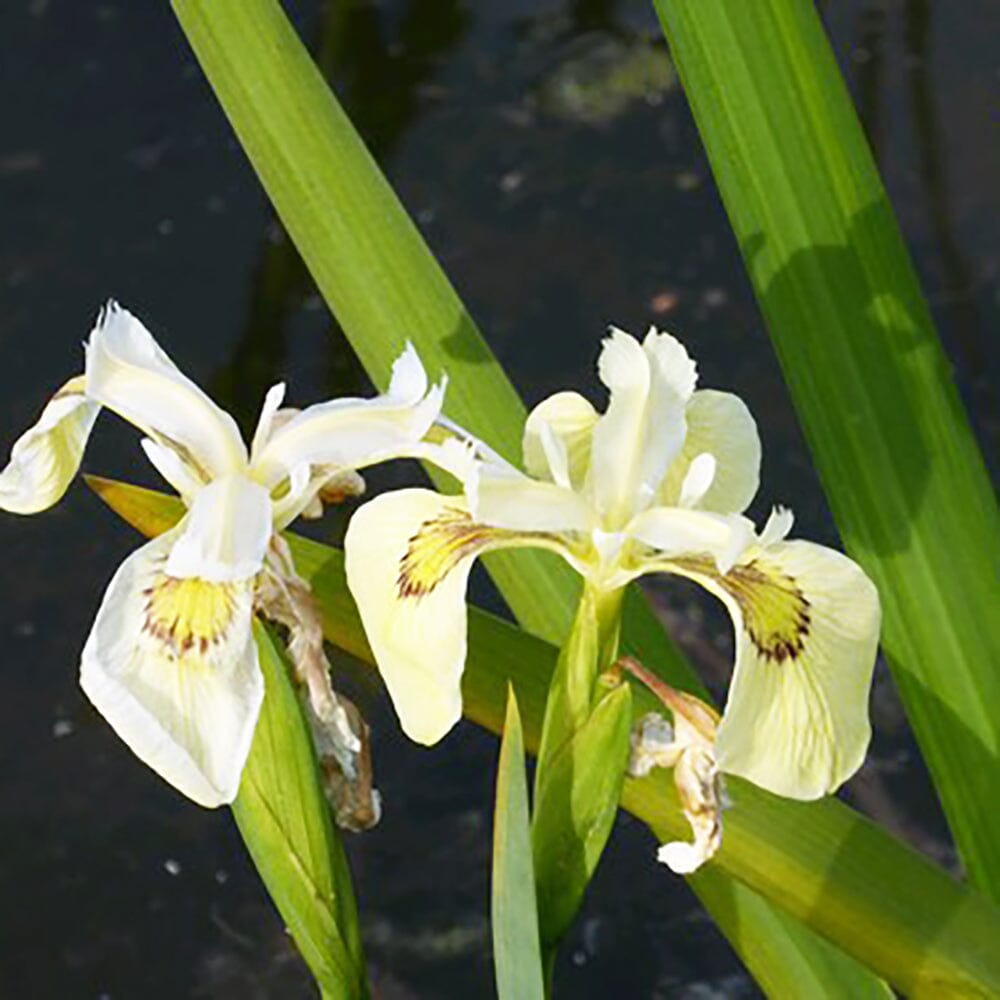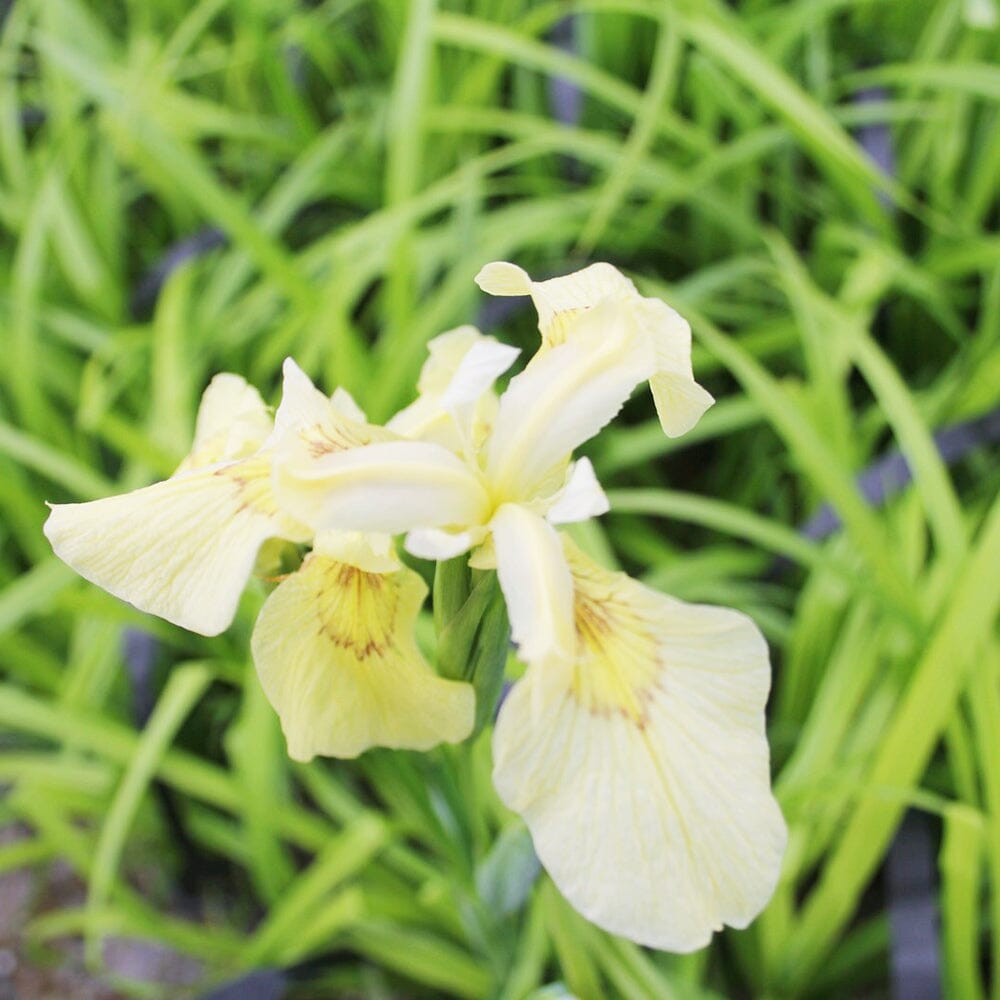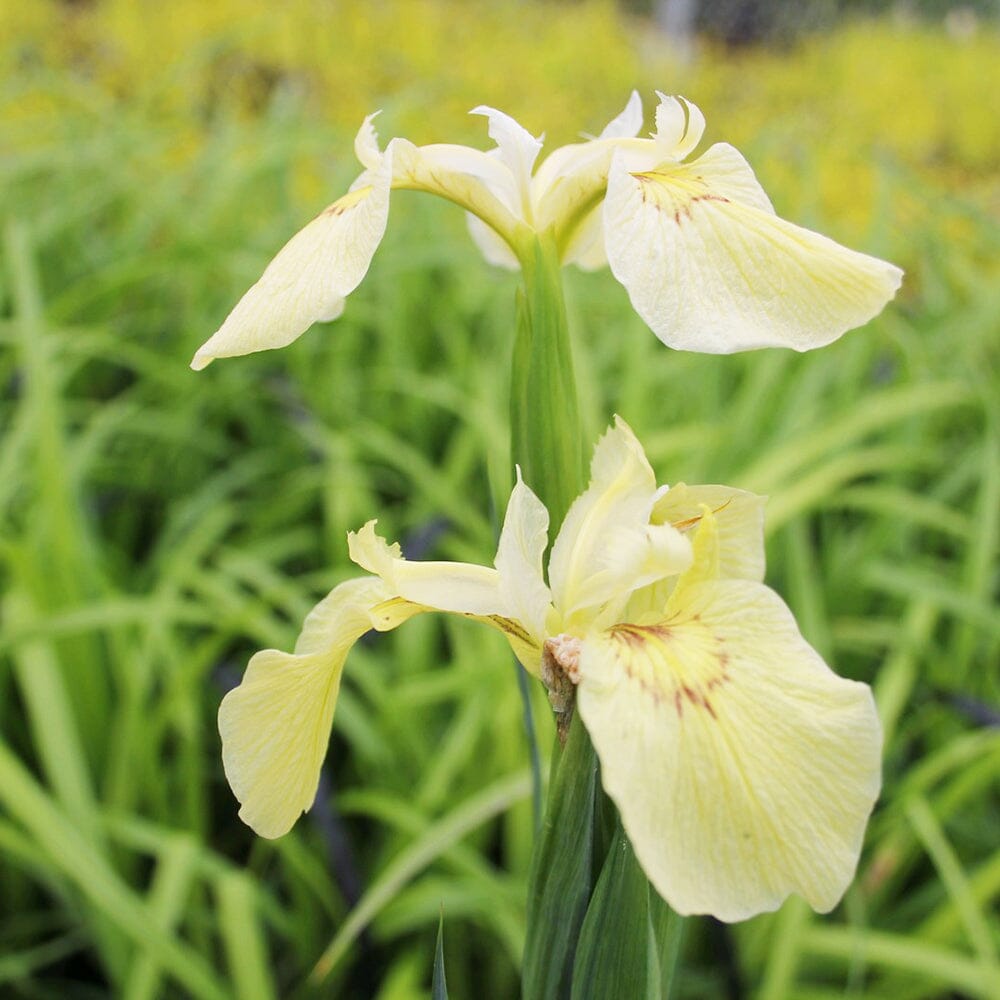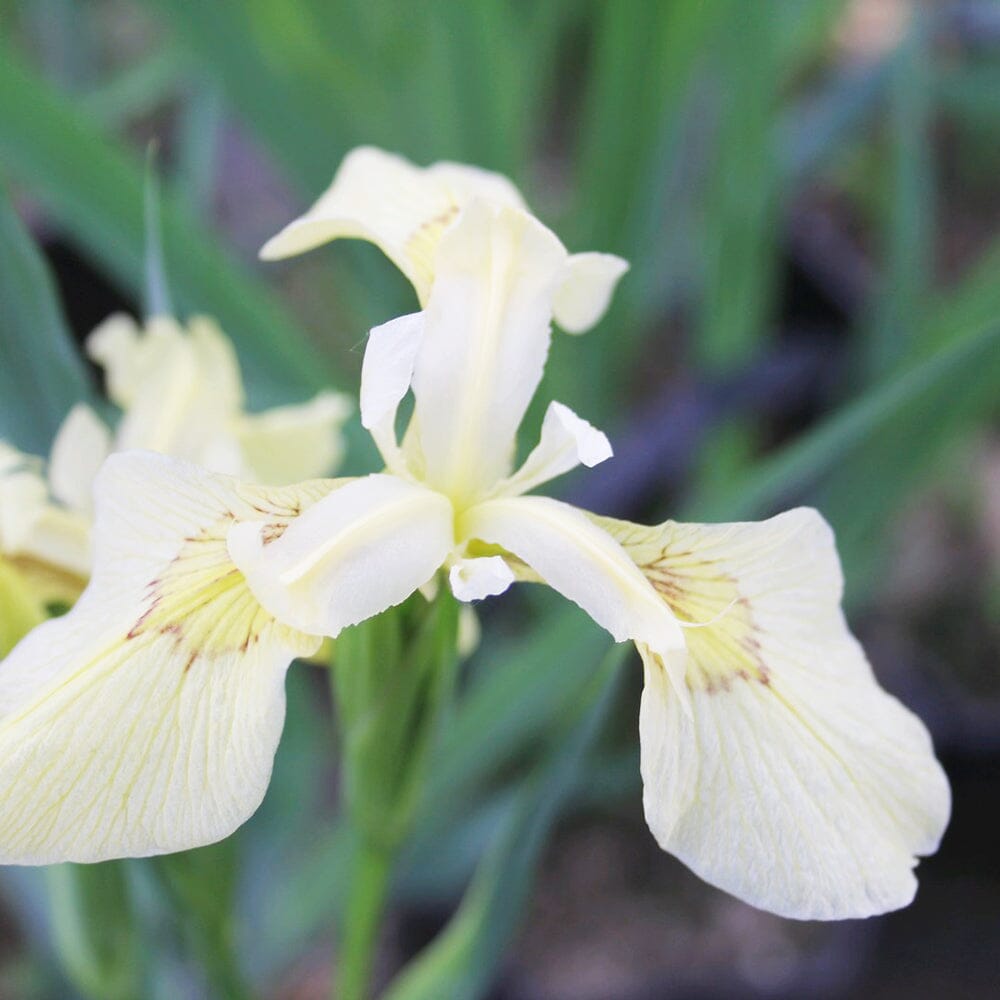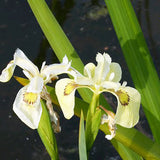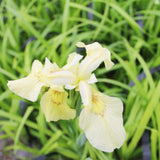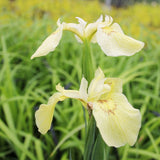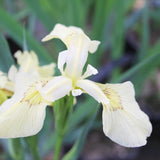Iris Pseudacorus Alba Aquatic Pond Plant - Yellow Flag Iris
Iris pseudacorus 'Alba' is a stunning cultivar of the Iris pseudacorus species, commonly known as the Yellow Flag Iris. Here's a detailed description and care guide for Iris pseudacorus 'Alba':
Description:
Iris pseudacorus 'Alba' is a vigorous herbaceous perennial that forms clumps of attractive sword-shaped leaves. It typically grows to a height of 3 to 4 feet (90 to 120 cm) and produces tall flowering stalks. The flowers of 'Alba' are large and showy, featuring six pure white petals with delicate yellow markings near the throat. The blooms are held above the foliage, creating a striking contrast against the green leaves. The flowers appear in late spring to early summer and are followed by seed pods containing dark brown seeds.
Care Guide:
Light: 'Alba' thrives in full sun to partial shade. It performs best when exposed to at least 6 hours of direct sunlight per day. However, it can tolerate some shade, especially in hot climates where partial shade can help protect the plant from intense heat.
Water: Yellow Flag Irises are naturally adapted to wet or boggy conditions, making them ideal for water gardens or moist areas. 'Alba' prefers consistently moist soil and can even tolerate standing water for short periods. Ensure that the soil remains evenly moist but not waterlogged.
Soil: This iris cultivar prefers rich, loamy soil that retains moisture but also provides good drainage. It can tolerate a wide range of soil types, including clay, loam, or sandy soil. Incorporating organic matter such as compost or well-rotted manure into the soil before planting can improve its fertility and drainage.
Temperature: Iris pseudacorus 'Alba' is hardy in USDA hardiness zones 4 to 9. It can withstand cold temperatures but may suffer in extremely hot climates. In warmer regions, providing some shade and ample moisture can help protect the plant during hot summer months.
Fertilizer: 'Alba' benefits from a balanced, slow-release fertilizer applied in early spring. Follow the package instructions for application rates and timing. Avoid excessive nitrogen fertilization, as it can promote lush foliage growth at the expense of flower production.
Maintenance: Remove any dead or yellowing leaves as needed to maintain the plant's appearance. After flowering, you can trim the spent flower stalks to tidy up the plant. Divide clumps every three to five years to prevent overcrowding and maintain plant vigor.
Pests and Diseases: 'Alba' is generally resistant to most pests and diseases. However, watch for common iris pests such as aphids or iris borers. Regular inspection of the plants and prompt action if any issues arise can help keep them healthy.
Propagation: You can propagate Iris pseudacorus 'Alba' through division. In early spring or fall, dig up the clumps and carefully separate the rhizomes, ensuring that each division has healthy roots and leaves. Replant the divisions in prepared soil and water them thoroughly.
Iris pseudacorus 'Alba' adds elegance and brightness to garden beds, borders, and water gardens with its pristine white flowers. With the right growing conditions and care, this cultivar can thrive and provide years of beauty in your landscape.
Selection:
Research different species of marginal pond plants to find ones that suit your pond's conditions and your aesthetic preferences. Consider factors such as height, flower colour, foliage texture, and seasonal interest when selecting plants.
Placement:
Observe the natural conditions of your pond, such as sun exposure, soil type, and water movement, and choose plants that are adapted to those conditions. Create different planting zones around the pond, with plants that prefer wet soil closer to the water's edge and those that tolerate drier soil further away.
Sunlight:
Marginal plants typically thrive in full sun to partial shade. Some species can tolerate more shade, but for optimal growth and flowering, provide them with at least 6 hours of direct sunlight per day.
Water Depth:
Determine the water depth requirements of the marginal plants you choose. Some plants prefer water up to 6 inches deep, while others can tolerate water up to 12 inches or more. Ensure that the water level remains consistent within the preferred range for the chosen plants.
Soil:
Marginal plants prefer a rich, loamy soil that retains moisture but is not waterlogged. Amend the soil with organic matter, such as compost or well-rotted manure, to improve its fertility and drainage. Avoid using heavy clay soil, as it can become compacted and restrict root growth.
Planting:
Dig a hole slightly larger than the root ball of the plant and loosen the soil at the bottom. Place the plant in the hole, ensuring that the crown is level with or slightly above the soil surface. Backfill the hole with soil and gently firm it around the plant to eliminate air pockets. Water thoroughly after planting to settle the soil and provide initial hydration.
Mulching:
Apply a layer of organic mulch around the base of the plants to suppress weeds, conserve moisture, and regulate soil temperature.Use materials like straw, shredded bark, or compost, and maintain a depth of 2-3 inches.
Watering:
Marginal plants prefer consistently moist soil but should not be waterlogged. Monitor the moisture level regularly and water as needed to keep the soil evenly moist. During hot and dry periods, provide supplemental watering to prevent the soil from drying out.
Fertilization:
Marginal plants generally do not require heavy fertilization if the soil is nutrient-rich. However, if growth appears weak or leaves show signs of nutrient deficiencies, apply a balanced slow-release fertilizer according to the manufacturer's instructions.
Maintenance:
Remove any yellowing or dead leaves to maintain plant health and appearance. Divide overcrowded plants every few years to prevent competition for resources and promote vigorous growth. Prune back excessive growth to maintain a tidy appearance and to prevent plants from encroaching on other plants or the pond itself.
Winter Care:
Hardy marginal plants can withstand winter temperatures and require minimal care. Cut back dead foliage in late fall or early spring to tidy up the planting area. In colder regions, consider protecting tender plants with a layer of mulch or covering them with burlap during winter to prevent frost damage.
Monitoring and Troubleshooting:
Regularly inspect plants for signs of pests, diseases, or nutrient deficiencies. Address any issues promptly with appropriate treatments, such as organic insecticides, fungicides, or nutrient amendments. By following these detailed tips and providing proper care, you can create a beautiful and thriving planting zone around your pond, enhancing its visual appeal and supporting a diverse ecosystem.








